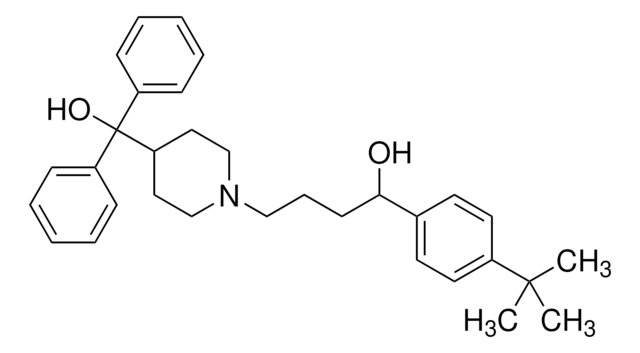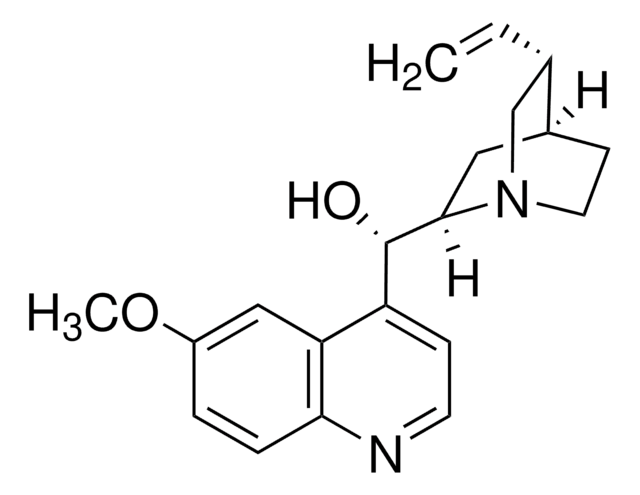A7205
3-Acetamidophenol
97%
Synonym(s):
3′-Hydroxyacetanilide
Sign Into View Organizational & Contract Pricing
All Photos(3)
About This Item
Linear Formula:
CH3CONHC6H4OH
CAS Number:
Molecular Weight:
151.16
Beilstein:
907998
EC Number:
MDL number:
UNSPSC Code:
12352100
PubChem Substance ID:
NACRES:
NA.22
Recommended Products
Assay
97%
form
crystals
mp
145-148 °C (lit.)
SMILES string
CC(=O)Nc1cccc(O)c1
InChI
1S/C8H9NO2/c1-6(10)9-7-3-2-4-8(11)5-7/h2-5,11H,1H3,(H,9,10)
InChI key
QLNWXBAGRTUKKI-UHFFFAOYSA-N
Looking for similar products? Visit Product Comparison Guide
Related Categories
Signal Word
Warning
Hazard Statements
Precautionary Statements
Hazard Classifications
Eye Irrit. 2 - Skin Irrit. 2
Storage Class Code
11 - Combustible Solids
WGK
WGK 2
Flash Point(F)
Not applicable
Flash Point(C)
Not applicable
Personal Protective Equipment
dust mask type N95 (US), Eyeshields, Gloves
Choose from one of the most recent versions:
Already Own This Product?
Find documentation for the products that you have recently purchased in the Document Library.
Identification of hepatic protein targets of the reactive metabolites of the non-hepatotoxic regioisomer of acetaminophen, 3'-hydroxyacetanilide, in the mouse in vivo using two-dimensional gel electrophoresis and mass spectrometry.
Y Qiu et al.
Advances in experimental medicine and biology, 500, 663-673 (2002-01-05)
M A Bae et al.
Molecular pharmacology, 60(4), 847-856 (2001-09-20)
Acetaminophen (AAP), a widely used analgesic drug, can damage various organs when taken in large doses. In this study, we investigate whether AAP causes cell damage by altering the early signaling pathways associated with cell death and survival. AAP caused
M A Tirmenstein et al.
The Journal of biological chemistry, 264(17), 9814-9819 (1989-06-15)
Acetaminophen (250 mg/kg) administered intraperitoneally to fasted, phenobarbital-induced mice produced hepatotoxicity. No hepatotoxicity was observed after the administration of the regioisomer 3'-hydroxyacetanilide (600 mg/kg). Similar levels of covalent binding to liver homogenates occurred in mice receiving either acetaminophen or 3'-hydroxyacetanilide
N G Palmen et al.
Toxicology, 84(1-3), 157-170 (1993-11-12)
A model system for the detection of reactive metabolites, using glutathione depletion after microsomal activation, has been described previously. We developed a battery of complementary test systems using rat liver microsomes for metabolism and aqueous glutathione solutions, human erythrocytes or
T G Myers et al.
Chemical research in toxicology, 8(3), 403-413 (1995-04-01)
Acetaminophen (4'-hydroxyacetanilide), a widely used analgesic/antipyretic drug, is hepatotoxic in large doses, whereas the m-hydroxy isomer of acetaminophen, 3'-hydroxyacetanilide, is not hepatotoxic. Both are oxidized by mouse liver cytochromes P-450 to reactive metabolites that bind covalently to hepatic proteins. Because
Our team of scientists has experience in all areas of research including Life Science, Material Science, Chemical Synthesis, Chromatography, Analytical and many others.
Contact Technical Service







